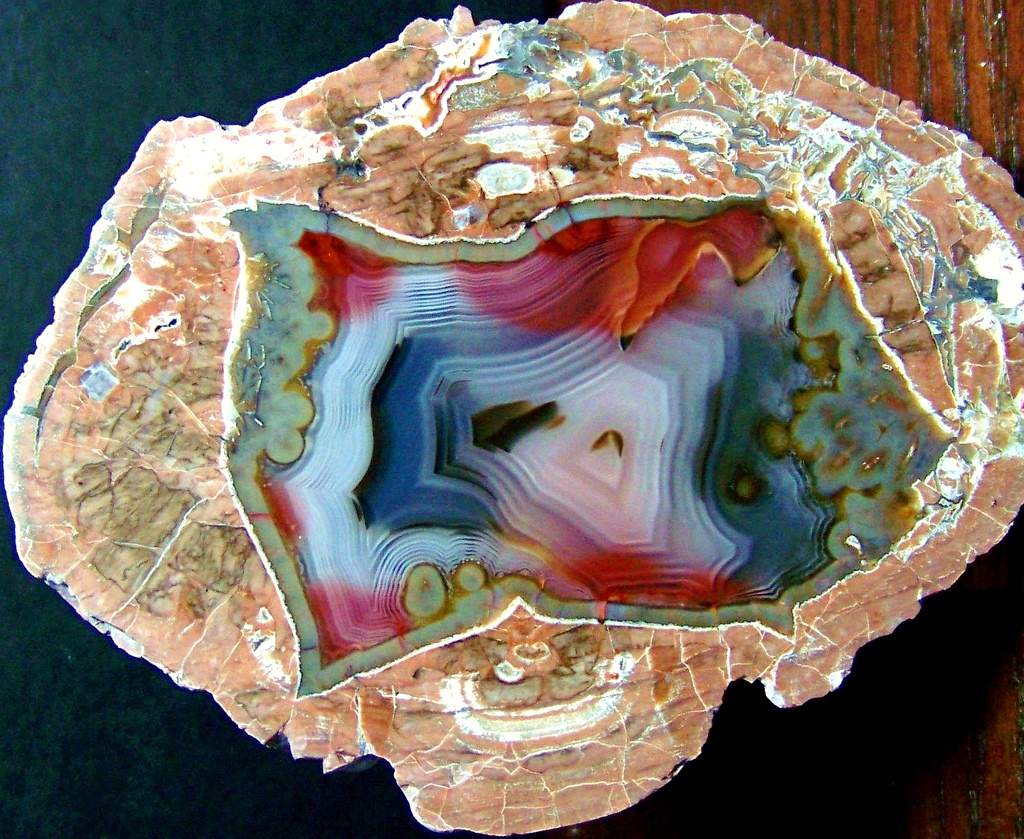Thunderegg: The Hidden Wonders of Nature’s Geological Masterpieces
In the vast tapestry of Earth’s natural wonders, there exists a lesser-known geological marvel called the thunderegg. Often mistaken for geodes, thundereggs are not only visually stunning but also carry a rich history and a mystique that captivates both amateur rockhounds and professional geologists alike.
What is a Thunderegg?
A thunderegg is a nodule-like rock, typically formed in rhyolitic volcanic ash layers, which is often filled with a variety of minerals, including chalcedony, agate, and opal. Unlike geodes, which are hollow and lined with crystals, thundereggs are usually solid throughout, with intricate patterns and colors that tell a story of their volcanic origins.
The term “thunderegg” is derived from Native American legend, particularly among the Pacific Northwest tribes. They believed that these stones were created by thunder spirits battling in the skies, hurling rocks at each other, which then fell to Earth. This mystical origin story adds an extra layer of allure to these already fascinating geological formations.
Formation and Discovery
Thundereggs form in volcanic ash beds, where gas bubbles create voids. Over time, these voids are filled with mineral-rich solutions, which eventually solidify into the beautiful, often complex structures seen when thundereggs are cut open. The process can take millions of years, and the specific minerals that fill the voids can vary, resulting in a wide range of appearances.
The state of Oregon, particularly in the regions of central and eastern Oregon, is renowned for producing some of the finest thundereggs. The Deschutes Formation and the Crooked River Basin are particularly famous for yielding specimens with stunning patterns and colors, making Oregon the “thunderegg capital of the world.”
The Allure of Thundereggs
What makes thundereggs particularly captivating is their unpredictability. From the outside, a thunderegg might appear as an unremarkable, rough stone. However, once cut open, it reveals a dazzling array of colors and patterns that are as unique as a fingerprint. Some thundereggs display intricate banding patterns, reminiscent of landscapes or abstract art, while others may contain vibrant hues of red, orange, blue, or purple.
For collectors, the thrill lies in the discovery—the anticipation of what lies beneath the surface. Each thunderegg is a mystery waiting to be unveiled, and the satisfaction of revealing a particularly beautiful or unusual specimen is unmatched.
Thundereggs in Culture and Commerce
While thundereggs may not be as well-known as diamonds or emeralds, they have a dedicated following among gem enthusiasts and collectors. They are often polished and used in jewelry, paperweights, or simply displayed as natural art pieces.
In Oregon, thundereggs hold a special place in local culture. They were designated the state rock of Oregon in 1965, and the state’s geology museum exhibits some of the finest examples. Additionally, many rock shops in the region offer visitors the chance to find, purchase, or even cut their own thundereggs.
Conclusion
Thundereggs are more than just geological curiosities; they are natural works of art that remind us of the Earth’s ancient and tumultuous history. Whether you’re a seasoned geologist or a curious novice, the allure of thundereggs lies in their mystery and the beauty hidden within. In every thunderegg lies a story, waiting to be discovered, appreciated, and cherished—a true testament to the wonders of our planet.




